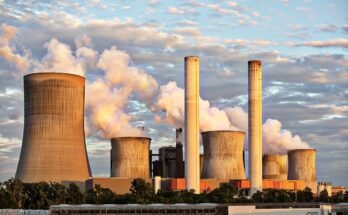With the urgent need to combat climate change, lower greenhouse gas emissions, and abandon fossil fuels, the global energy landscape is on the verge of an epochal shift. At the heart of this transition lies the push for sustainable energy transition—revolutionizing the way energy is generated, utilized, and processed around the world. Such a shift is critical to preserving the very environment upon which we depend and is also key to building an economy that is resilient and to achieving energy security. So how do we best advocate for this change, and what players need to take action and at what levels to make it happen?
1. Why We Need to Transition to Sustainable Energy
Fossil fuels like oil, natural gas, and coal cause it to burn, creating carbon emissions and pollution, which contribute to environmental degradation and global warming. We have to act fast to make the transition to renewable and cleaner energy sources as the Intergovernmental Panel on Climate Change (IPCC) noted that to avoid the worst effects of global warming we need to limit warming to well below 2°C and to limit temperature increase to 1.5°C if possible; this means reducing carbon emissions to net zero by mid-century.
Sustainable energy transition refers to the transition from dying, polluted energy sources (NON-renewable) to renewable, cleaner energy sources (wind, solar, hydropower, geothermal). It also includes increasing energy efficiency, supporting smart grid technologies, electrifying transportation and developing energy storage technologies.
2. Environmental Policy Incentives and Regulation
The push for sustainable energy is a multidimensional undertaking, and understanding the underlying drivers is critical to promoting policies and practices that make a difference:
A. Global warming and Environmental Issues
Climate change is the most serious driver of the energy transition. The transition to clean energy sources is imperative as global warming continues to result in extreme weather events, melting ice caps, and rising sea levels. Shifting away from fossil fuels will lower emissions and curb environmental devastation.
B. Economic Growth and Job Creation
Clean energy jobs, a rapidly developing and rising segment of an economy, are increasing, too. The renewable energy industry was responsible for 12 million jobs worldwide, according to the International Renewable Energy Agency (IRENA) in 2020. Such a transition offers a chance to create millions of new jobs, invigorate the global economy and reduce dangerous emissions caused by an overreliance on fossil fuels — from the production of solar panels to the erection and maintenance of wind turbines.
C. Technological Advancements
Thanks to the electrifying advances of solar photovoltaics and offshore wind, energy storage and other renewable energy technologies, they are within everyone’s price range, and cheap. Advances in technologies can roll into highly advanced energy systems, including decentralized energy grids and demand-response systems that increase efficiency and reliability as well.
D.Policy and Regulatory Support 3.
Many countries’ climate and energy policies are turning to clean energy sources. Policies such as carbon pricing, renewable energy mandates, clean technology subsidies, and international climate agreements, like the Paris Agreement, are supporting the energy transition. As policies change, they offer both the regulatory structure and monetary motivators which support the development of sustainable energy deployments.
Building for a Transition to Sustainable Energy
A. Fund Infrastructure for Renewables
Renewable Energy: Investment in renewable energy infrastructure must be ramped up by governments and the private sector. That involves building utility-scale solar and wind farms, updating electrical grids and establishing energy storage facilities to capture excess renewable energy. Not only investments in R&D can lead to reductions in costs and efficiency improvements for renewable technologies.
B. Adoption of Energy Efficiency Measures
Energy efficiency is the least expensive route to providing emissions reductions and energy demand. Electrification: We can implement energy-saving programs such as building rejuvenation, industrial process stimulators, energy-efficient appliance growth, energy demand reductions can entirely be obtained from such measures. Such energy efficiency measures in the building and transport sectors are crucial for achieving sustainable energy and environmental objectives.
C. Encouraging Collaboration between the Public and Private Sectors
Dear ReaderAchieving a sustainable energy transition relies on close cooperation among government, business, financial institutions and non-governmental organizations. Governments can help Sanction private investment and make clean energy investments in projects, while businesses can help make new technologies viable through research and innovation. Leveraging public-private partnerships can facilitate the unlocking of new funding streams, and ensure that energy transition initiatives are scalable and sustainable.
D. Community Education and Outreach
Democratic action and public engagement are necessary ingredients of the energy transition. Doing so — as well as educating consumers about how renewable energy helps to construct a sustainable world, promoting energy conservation, and including local communities in the decision-making process involving such projects — can bolster popular support and involvement. We need purple governments and non-profit organizations to help to educate the public about the environmental, economic and health benefits of switching over to clean energy.
E. Accelerating the Electrification of Transportation
The transport sector is among the largest consumers of carbon emissions. Transitioning from fossil fuel combustion to electric vehicles is among the most potent ways to decarbonise. Governments can direct this shift faster, through more EV charging stations, by subsidizing EV purchases and greening the electricity supply and through public transit systems.
4. Overcoming Challenges
However, the need for the energy transition to be sustainable and inclusive is apparent, and there are several challenges we need to solve:
- Capital Costs: Upfront costs of renewable energy generation projects, energy storage systems, and upgrades to the grid can be significant. These barriers must be addressed with both public and private funding mechanisms.
- Limited Energy Access in Developing Areas: In many countries, especially developing ones, energy access is still scarce. Solutions that bundle clean energy technologies with affordable financing and capacity-building are urgently needed.
- Intermittency & Reliability — Wind and solar energy are intermittent, presenting challenges for grid reliability. Energy storage, demand response, and hybrid power systems are among the solutions that can alleviate these challenges.
- Political and Regulatory Hurdles: Political will and stable regulatory environments are the basics to driving energy transition. In certain areas, entrenched interests in the fossil fuel sector could have pushed back against change leading to hurdles in adopting policy.
Conclusion
Promoting a sustainable energy transition is not only a technological or economic challenge — it is a social and political challenge.” This transition will not happen by itself; it will require cooperation among all sectors of society–governments, businesses and individuals. The world can shift to cleaner, greener energy—if the right investments, policies, and innovations remain in the right direction. The benefits — lower emissions, better air quality, more energy security and economic opportunity — are well worth the work. If we take action now, we can create a better, greener future for generations to come.



